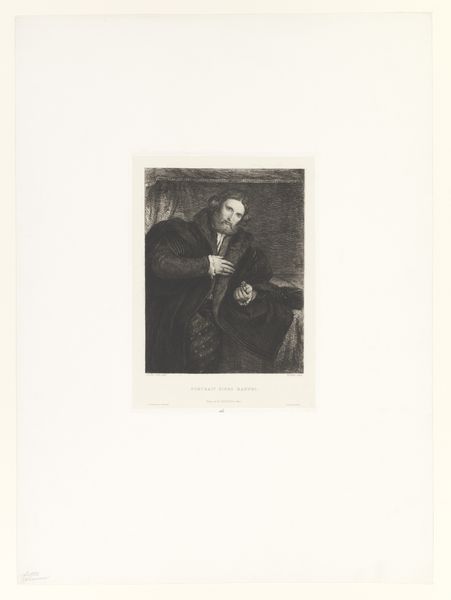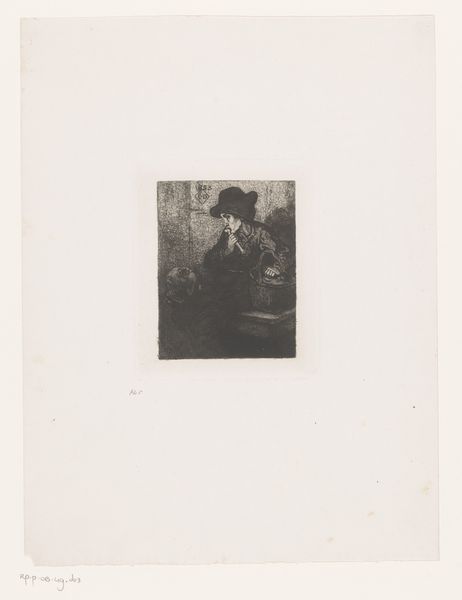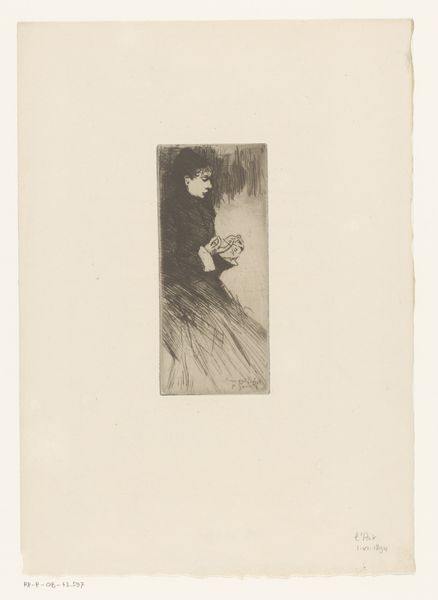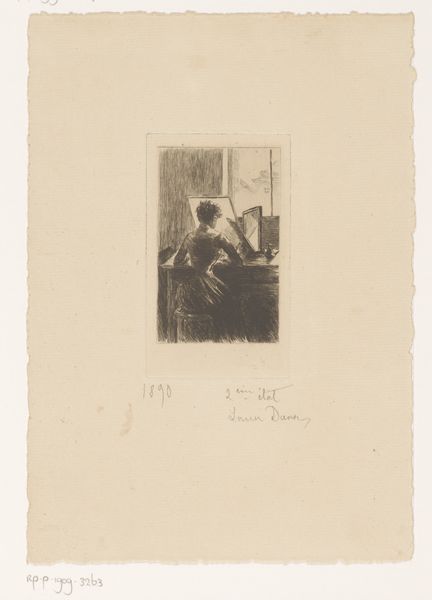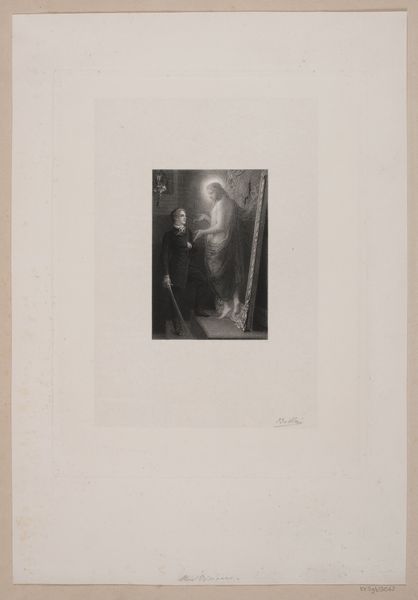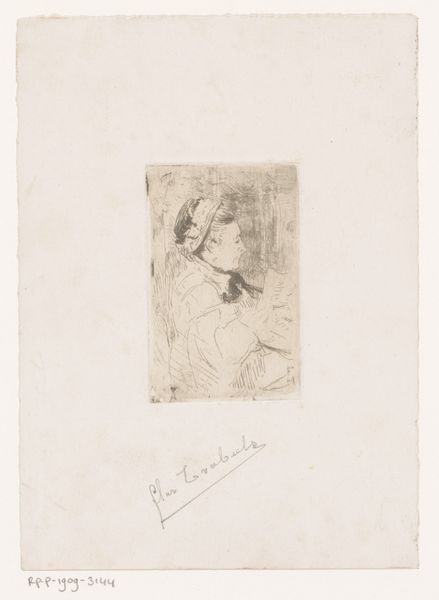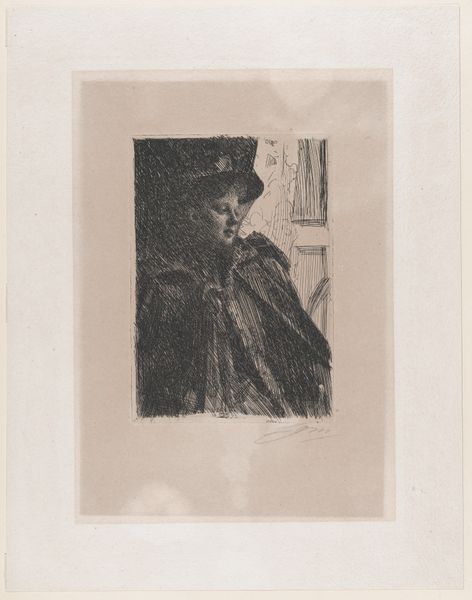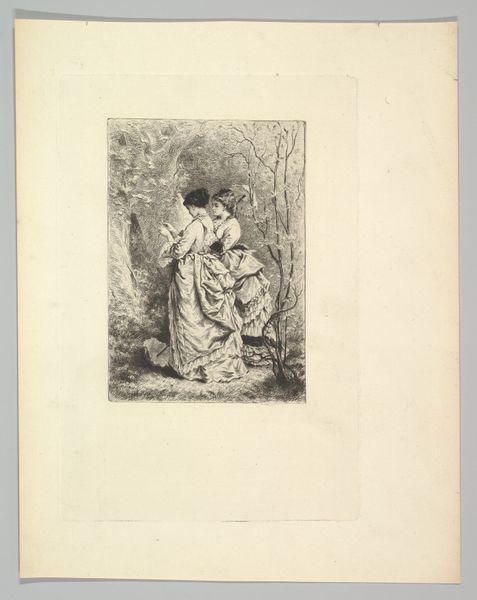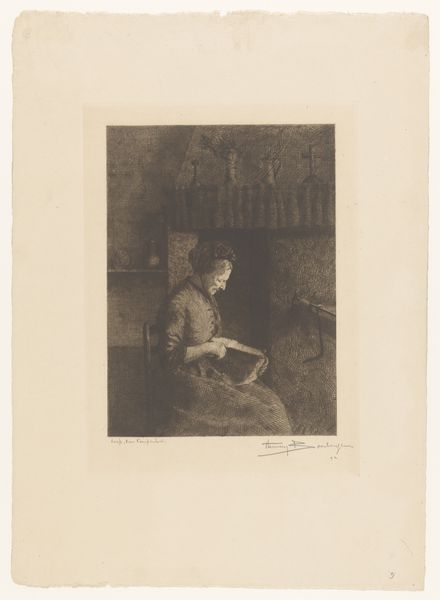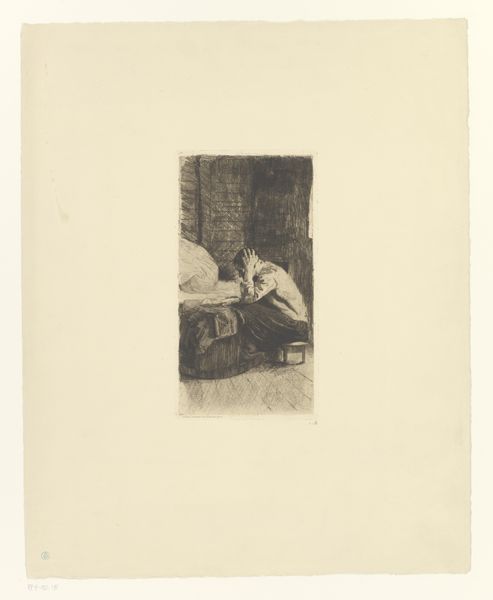
drawing, print, etching, paper
#
portrait
#
pencil drawn
#
drawing
#
16_19th-century
#
ink paper printed
# print
#
etching
#
pencil sketch
#
figuration
#
paper
#
genre-painting
#
academic-art
#
realism
Dimensions: height 158 mm, width 108 mm
Copyright: Rijks Museum: Open Domain
Editor: This is "Handwerkende dame," or "Craftswoman" by Auguste Danse, an etching from 1876. It’s a small print, very delicate, showing a woman working on what looks like embroidery. What stands out to me is its quiet domesticity; what do you see in it? Curator: It is intriguing to consider this print within the context of late 19th-century realism. This was a period where there was growing interest in representing everyday life, particularly that of the working class. But here, the artist depicts a woman engaged in needlework, a subject with different connotations. To what extent do you see this work reinforcing or challenging the social expectations of women at the time, and where was this exhibited? Editor: That's interesting. I hadn't really thought about the social implications. Needlework was often considered a suitable pastime for women, reinforcing their domestic role. It seems she may not have displayed works that overtly challenged convention. Was there a space in the art world to celebrate domestic achievements like this, or could the etching also reflect a statement on labor? Curator: I find it valuable to examine the exhibition history and the reception of this particular artist. Did the spaces in which her artworks were shown – be it the Salons or smaller galleries – affect how this print was interpreted? I believe that the piece, like any piece of art, did not exist in a vacuum, but played a role in broader cultural dialogue about work, leisure and class. The ambiguity we see now may in itself be a commentary. Editor: That makes me think differently about it. I initially saw it as a simple portrayal of domestic life, but now I see it's speaking to a much more complex picture of women's roles. Curator: Indeed. Understanding the socio-political and historical framework helps illuminate these intricate layers. It makes one consider the woman's work and wonder if that domestic scene may be representative of social boundaries or of quiet independence.
Comments
No comments
Be the first to comment and join the conversation on the ultimate creative platform.
